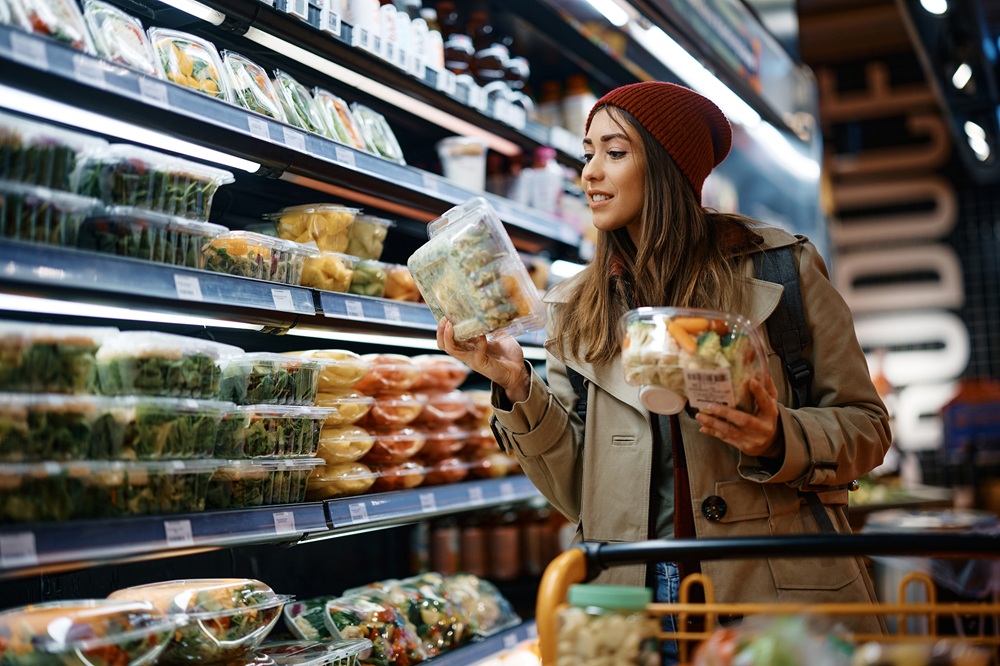Few things frustrate me more than watching our industry celebrate an “innovative” new product or packaging launch — only to see that innovation undermined by generic, underwhelming packaging.
Case in point: a recent launch featured a four-pack of Honey mangoes (Ataulfo). The press release was everything it should be — descriptive, informative, and full of compelling, consumer-centric product benefits. It positioned the mango as fiberless, creamy, snack-sized, and “sweet as honey.” It highlighted convenience, versatility, and usage ideas perfect for today’s snack-driven consumer.
Then I saw the actual packaging. Not a single one of those powerful consumer benefit messages made it onto the front-facing label. The packaging messaging was, at best, a missed opportunity. At worst, it was a reminder that our industry still fails to grasp a simple truth: packaging isn’t just a container — it’s a marketing vehicle. It’s a point-of-sale billboard. It’s the closest we get to influencing the consumer to buy. And right now, too many fresh produce companies are driving that vehicle straight past the consumer.
What Today’s Shoppers Notice
As an adjunct professor of Produce Marketing at Cal Poly State University, I have a front-row seat to how emerging consumers think about fresh produce. For 40 hours over 10 weeks, I work with 40 college seniors — intelligent, brand-literate shoppers — who tell me exactly what they notice (and don’t) when buying fruits and vegetables.
To test what messages today’s produce packaging actually communicates, I recently brought to class a collection of real-world produce packaging: grape pouches, berry clamshells, avocado nets, branded mandarin bags, and more. I asked students to tell me what each package was saying about the product inside.
The results were eye-opening. Most students could not distinguish between a grower brand and a varietal name — except in apples, where years of consistent branding and brand messaging have built consumer understanding for certain varieties.
Presented with a bag of Rainier cherries, students did not know what a Rainier cherry was, had no idea it was a cherry variety, could not describe what made it different, or even what flavor to expect. Why? Because the bag did not tell them.
Instead of taking space to tantalizingly describe the product or position Rainier cherries as the ultimate, “get them while they are in season” snack fruit, the bag featured a grower name, a grower marketing logo, a PLU code, large amounts of floral design elements, and bilingual copy — but not a single, enticing, descriptive word about the Rainier cherries themselves.
The takeaway is clear: if packaging doesn’t explain it, Gen Z won’t know it — and won’t buy it.
Why Messaging Must Evolve
Using produce packaging to communicate enticing, ‘buy me’ consumer-centric messages matters because the bar for consumer communication is getting higher, not lower.
Today’s shoppers are fluent in packaged goods messaging. They expect to see callouts like “Keto-Friendly,” “15g Protein,” or “Supports Gut Health” on products they buy. They search for products and brands online that meet their health goals and packaging messaging is a big part of shopper education at the point of purchase.
Yet in produce, we too often reduce our packaging message to the product name and the grower brand, assuming shoppers know and understand the complexities of variety, taste, texture, and nutrition. This is versus being proactive and intentional with our packaging design, using it to educate and entice consumers based on our understanding of their fresh produce needs and wants.
Here is what the industry must understand: even though fresh produce is healthy and delicious, the meaning of “healthy,” or “delicious” is not universal. It varies depending on the consumer’s life stage, values, and goals.
For my Gen Z students, healthy means they are looking for products that deliver protein, quality sleep, better skin, and sharper focus. They are looking for nutrients and functional benefits. And when they don’t find that story on our fresh produce packaging, they walk right past the produce department to the center store where the messaging speaks their language.
Meanwhile, we’re still writing glowing and promotional press releases… for ourselves. So let me be clear: if you’re in charge of packaging design decisions, here is what’s at stake:
If your packaging doesn’t highlight a product’s nutritional value, you’re losing sales.
If your packaging fails to describe a fruit’s unique flavor, texture, or use cases, you’re losing sales.
If your consumer messaging exists only in a trade press release and not on the actual package itself, you’re losing sales.
There is no excuse for these disconnects — not in today’s competitive landscape, not with the tools we have available. Your packaging must be treated as a frontline marketing asset, not just as the pragmatic, perfunctory vessel that transports your product safely from A to B.
Our industry produces some of the most flavorful, nutritious, and crave-worthy products on the planet. It’s time we started packaging like our products deserve to win.
- Lisa Cork is the chief executive of Fresh Produce Marketing Ltd and adjunct Professor of Produce Marketing at Cal Poly State University in California.

